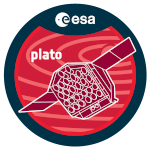3D non-LTE modeling of the stellar centre-to-limb effect for characterizing planetary atmospheres
1 : Stockholm University
The center-to-limb variation (CLV) of the stellar lines across the stellar disk is an important effect for planetary transit spectroscopy. Indeed the variation of spectral line profiles when the planet transits different part of the stellar disk can affect the determination of elemental abundances in the exoplanetary atmospheres, as shown by Yan et al. (2017).
Accurately modelling the CLV of the stellar lines in planet-host stars is fundamental to correctly detect and measure abundances of atmospheric species and thus improve the exoplanet atmosphere characterization.
Accurately modelling the CLV of the stellar lines in planet-host stars is fundamental to correctly detect and measure abundances of atmospheric species and thus improve the exoplanet atmosphere characterization.
However, we know that the commonly used 1D plane-parallel LTE atmosphere models fail to reproduce spatially resolved observations of the solar disk. 3D hydrodynamic models and non-LTE line formation is required for an accurate modelling of the stellar CLV effect.
So far, the best studied atomic lines in transit spectroscopy are the Na D lines and the NIR K resonance lines. In this talk I will present new results regarding the modelling of these lines in the Sun using 3D non-LTE radiative transfer and discuss possible implications for transit spectroscopy of planets around F, G and K type stars, like those that will be observed by the forthcoming PLATO mission.
So far, the best studied atomic lines in transit spectroscopy are the Na D lines and the NIR K resonance lines. In this talk I will present new results regarding the modelling of these lines in the Sun using 3D non-LTE radiative transfer and discuss possible implications for transit spectroscopy of planets around F, G and K type stars, like those that will be observed by the forthcoming PLATO mission.

 PDF version
PDF version
